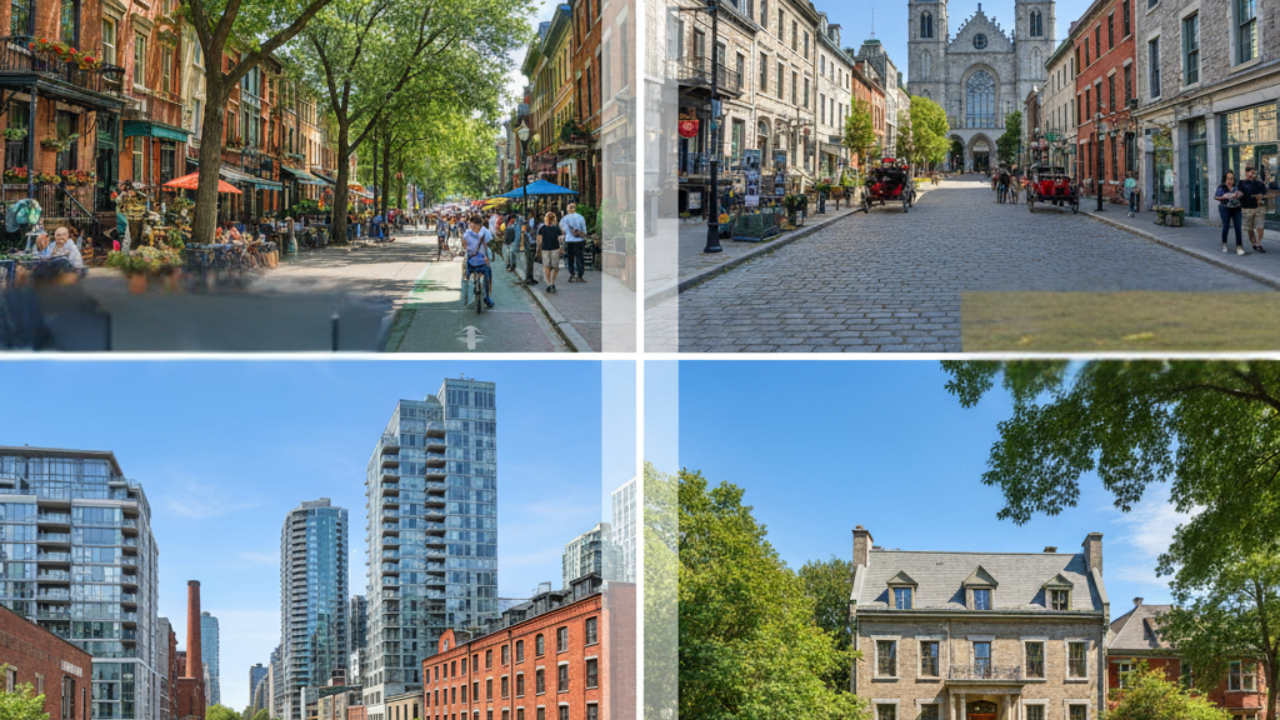
Sacramento Helicopter Crash Leaves Three Crew Memb
A medical helicopter crashed on Highway 50 in Sacramento; three crew members are critically injured,

Montreal is one of Canada’s most vibrant cities, offering a mix of culture, history, and modern urban living. For newcomers, families, and professionals, selecting the right neighborhood can greatly impact quality of life. Factors such as safety, public transport accessibility, amenities, schools, and rental or property prices all play a role in determining the best areas to settle. In 2025, Montreal continues to see growth in both population and real estate demand, making neighborhood choice more important than ever.
Neighborhood rankings are based on multiple factors, including affordability, safety, proximity to schools and workplaces, cultural attractions, recreational facilities, and access to public transportation. Lifestyle preferences also matter—some residents prefer quiet residential streets, while others seek vibrant urban hubs with restaurants, bars, and arts venues. Rankings aim to give an overall picture for different types of residents, from students and young professionals to families and retirees.
Downtown Montreal remains the city’s commercial and cultural heart. It is ideal for young professionals and students seeking a vibrant lifestyle with easy access to jobs, public transit, and nightlife. The area offers numerous high-rise apartments and condos, though rental prices are on the higher side. Residents enjoy proximity to cultural attractions like museums, theaters, and shopping districts. Downtown is also highly walkable, making it convenient for everyday life.
Known for its bohemian vibe, Plateau-Mont-Royal is a favorite among artists, students, and young families. The neighborhood is famous for colorful streets, cafés, boutique shops, and parks. It provides a strong sense of community while still being close to downtown. Rental and property prices are moderate to high, but residents benefit from vibrant cultural life, bike-friendly streets, and access to public transit. Plateau is ideal for those who value a creative and social environment.
Outremont is one of Montreal’s most prestigious neighborhoods, offering a quieter, family-friendly atmosphere with tree-lined streets, historic homes, and excellent schools. It is popular among professionals and families looking for luxury housing combined with a strong community feel. The area has numerous parks, cultural institutions, and boutique shops. Outremont is slightly more expensive than other neighborhoods but is highly sought after for its balance of comfort, safety, and accessibility.
Griffintown is a rapidly developing area near downtown, attracting young professionals and tech workers. The neighborhood has seen extensive condo developments, modern restaurants, and co-working spaces. Its industrial past blends with a modern urban lifestyle, offering a unique living experience. Griffintown is ideal for those seeking trendy, modern housing close to the city’s business hubs, though prices are steadily rising due to high demand.
This neighborhood offers a mix of residential calm and urban convenience. Families appreciate its schools, parks, and community centers, while young professionals enjoy its local cafés and food markets. Rosemont–La Petite-Patrie has a strong sense of community and remains relatively affordable compared to downtown and Plateau areas. It is known for its walkable streets and easy access to public transportation, making it ideal for daily commuting.
Verdun has emerged as a popular choice for those seeking affordable housing while still being close to the city center. Its riverside location provides recreational opportunities, including parks, bike paths, and outdoor spaces. Verdun is family-friendly and has a growing cultural scene, with cafés, restaurants, and community events. It offers a quieter lifestyle without sacrificing access to Montreal’s main attractions.
Mile End is a trendy neighborhood celebrated for its multicultural vibe, cafés, music venues, and art galleries. It is particularly popular among students, young creatives, and entrepreneurs. The area fosters innovation and creativity while still offering practical access to public transit and downtown. Although rental prices are increasing due to high demand, Mile End remains a vibrant hub for those seeking a dynamic urban lifestyle.
While technically across the river from Montreal, Longueuil is a suburban choice for families and professionals looking for quieter residential streets with good schools and parks. It offers a more affordable housing market than central Montreal neighborhoods and maintains easy access to the city via metro and bridges. Longueuil is ideal for those who prioritize space, safety, and community living while commuting to Montreal for work.
When selecting a neighborhood in Montreal, residents should consider their lifestyle needs, budget, and commuting requirements. Visiting neighborhoods in person, speaking with local residents, and exploring public transit options can help inform the decision. Families should prioritize access to schools and parks, while students and young professionals may value nightlife, coworking spaces, and cultural venues. It is also important to account for rental trends and housing availability, as some popular neighborhoods face high demand and limited options.
Montreal offers a diverse range of neighborhoods, each with its unique character and appeal. From the cultural vibrancy of Plateau-Mont-Royal and Mile End to the family-friendly atmosphere of Outremont and Rosemont, there is something for everyone. Emerging areas like Griffintown and Verdun provide modern, affordable alternatives close to the city center, while suburban Longueuil offers space and tranquility. In 2025, residents have many options to suit their lifestyle, budget, and personal preferences, making Montreal one of the most attractive cities in Canada to live in.